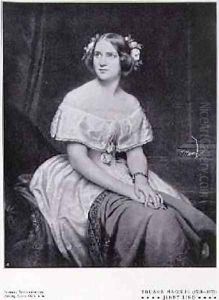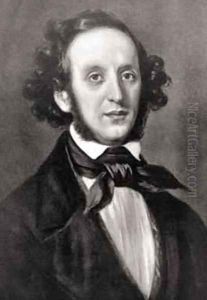Magnus, Eduard Paintings
Eduard Magnus was a notable German painter and artist of the 19th century, born on January 7, 1799, in Berlin. He hailed from a family that was well-acquainted with the arts; his brother Ludwig was a well-known musician. Magnus demonstrated an early interest and aptitude in the arts, which propelled him to pursue a career in painting.
Initially, Magnus studied at the Academy of Arts in Berlin and honed his artistic skills under the tutelage of established painters such as Karl Wilhelm Wach. He quickly developed a reputation for his exceptional portrait paintings, which became highly sought after by the bourgeoisie and nobility. In the 1830s, Magnus traveled extensively across Europe, including stops in Italy and France, which allowed him to study the works of the Old Masters and contemporary artists alike. This exposure to diverse artistic styles and techniques significantly influenced his own work.
Upon his return to Berlin, Magnus continued to work as a successful portraitist. He also ventured into other genres, including history painting, but it was his ability to capture the likeness and personality of his sitters that truly distinguished him as an artist. His portraits were known for their elegance, rich detail, and nuanced use of color. Magnus became a professor at the Berlin Academy, where he taught for many years, sharing his knowledge and experience with the next generation of artists.
Through his career, Eduard Magnus received various honors and was commissioned to paint portraits of notable figures of his time, including King Friedrich Wilhelm IV of Prussia. Despite the changing artistic trends of the 19th century, Magnus maintained his classical approach to painting, which was characterized by its clarity, precision, and adherence to traditional standards of beauty.
Magnus died on August 8, 1872, in Berlin. Although perhaps not as well-known today as some of his contemporaries, his contributions to the art world during his lifetime were significant, and his portraits continue to be appreciated for their craftsmanship and historical value.

